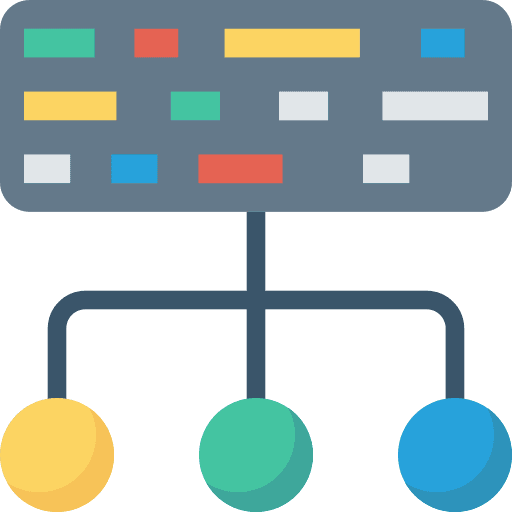khan Waseem
Thu Jan 26 2023
-4 min read
What is DSA? Understanding Data Structures and Algorithms

In today’s digital age, Data Structures and Algorithms (DSA) play a pivotal role in computer science and software development. These fundamental building blocks are essential for efficient problem-solving, and they underpin the technology that surrounds us. In this blog post, we will dive into the world of DSA, exploring their benefits, advantages, and providing real-world examples to illustrate their significance.
Before we delve into the benefits and advantages of DSA, let’s clarify what these terms mean:
Data Structures:
Data structures are the foundation for organizing and storing data in a computer’s memory. They define how data is stored, accessed, and manipulated. Data structures can be as simple as arrays or as complex as trees, graphs, or hash tables. Choosing the right data structure is crucial, as it directly impacts the efficiency and effectiveness of your algorithms.
Algorithms:
Algorithms are step-by-step procedures or sets of rules for solving a particular problem or performing a specific task. These rules are designed to work with specific data structures, ensuring that operations on the data are executed efficiently. Well-designed algorithms can significantly improve the performance of your software.
Now that we have a basic understanding of DSA, let’s explore their numerous benefits and advantages.
Benefits of Data Structures and Algorithms
1. Efficiency:
One of the primary benefits of using DSA is the improved efficiency they bring to software development. Well-designed data structures and algorithms allow you to perform operations on data quickly and with minimal computational resources. This efficiency is critical in real-time applications, large-scale data processing, and resource-constrained environments.
2. Scalability:
DSA provide a solid foundation for building scalable software systems. As your data and user base grow, efficient data structures and algorithms ensure that your system can handle increased loads without a significant decrease in performance. This scalability is essential for modern web applications, social networks, and cloud-based services.
3. Optimization:
DSA allow you to optimize your code for speed and memory usage. By selecting the right data structure and algorithm for a given problem, you can achieve the best possible performance. This optimization is critical for applications where every millisecond matters, such as online gaming, financial trading platforms, and autonomous vehicles.
4. Problem Solving:
DSA are powerful tools for solving complex problems. They provide a structured approach to breaking down a problem into smaller, manageable parts and then devising algorithms to address each part. This problem-solving approach is invaluable in various domains, including artificial intelligence, data analysis, and scientific research.
5. Code Maintainability:
Well-designed data structures and algorithms lead to more maintainable code. When your code is organized around efficient data structures and algorithms, it becomes easier to understand, debug, and extend. This benefits both individual developers and development teams working on collaborative projects.
Advantages of Data Structures and Algorithms
Now, let’s explore some specific advantages of using DSA in software development:
1. Standardization:
DSA provide a common language and framework for developers. They allow developers to communicate and collaborate effectively by using well-established data structures and algorithms. This standardization fosters a shared understanding of best practices and coding conventions within the software development community.
2. Portability:
Code that relies on DSA is often more portable across different platforms and programming languages. Since DSA are fundamental concepts, they can be implemented in various languages, making it easier to adapt and migrate code to different environments.
3. Reusable Libraries:
DSA are the building blocks of many software libraries and frameworks. Developers can leverage these libraries to save time and effort when building complex applications. This reuse of code not only accelerates development but also reduces the likelihood of introducing errors.
4. Competitive Advantage:
Companies that invest in DSA and algorithmic research gain a competitive edge. By developing efficient algorithms and data structures, businesses can offer faster and more resource-efficient services to their customers. This can be a significant selling point in today’s highly competitive market.
5. Career Opportunities:
Proficiency in DSA is highly valued in the tech industry. Developers with strong DSA skills are in high demand, and they often command higher salaries. Additionally, DSA knowledge is essential for technical interviews at top technology companies.
Real-World Examples of DSA
To illustrate the practical significance of DSA, let’s explore a few real-world examples:
1. Search Engines:
Search engines like Google rely on sophisticated data structures and algorithms to quickly retrieve relevant search results from massive data sets. Algorithms like PageRank and data structures like inverted indexes play a crucial role in providing accurate and fast search results.
2. Social Networks:
Social media platforms use graph algorithms to suggest friends, connections, and content recommendations. These algorithms rely on graph data structures to represent relationships between users and content.
3. Navigation Apps:
GPS navigation apps use algorithms for route planning, traffic prediction, and real-time updates. Data structures such as graphs and trees are used to represent road networks and calculate optimal routes.
4. E-commerce Recommendations:
Online retailers employ recommendation systems that use collaborative filtering algorithms to suggest products to customers based on their browsing and purchase history. These algorithms are highly dependent on efficient data structures for storing and processing user data.
5. Financial Trading:
High-frequency trading firms use algorithms to make split-second decisions in buying and selling financial instruments. These algorithms rely on advanced data structures and optimization techniques to execute trades with minimal latency.
Conclusion
In conclusion, Data Structures and Algorithms are the backbone of modern computer science and software development. Their benefits and advantages are far-reaching, impacting everything from code efficiency and scalability to problem-solving and career opportunities. As technology continues to advance, a strong foundation in DSA will remain a valuable asset for developers and businesses alike. So, if you’re embarking on a journey in the world of software development, make sure to invest time in mastering these fundamental concepts; they will undoubtedly pave the way for your success.